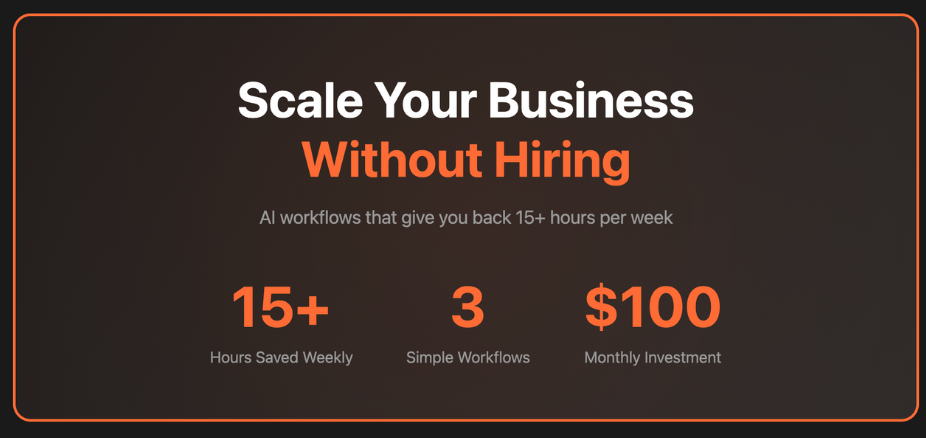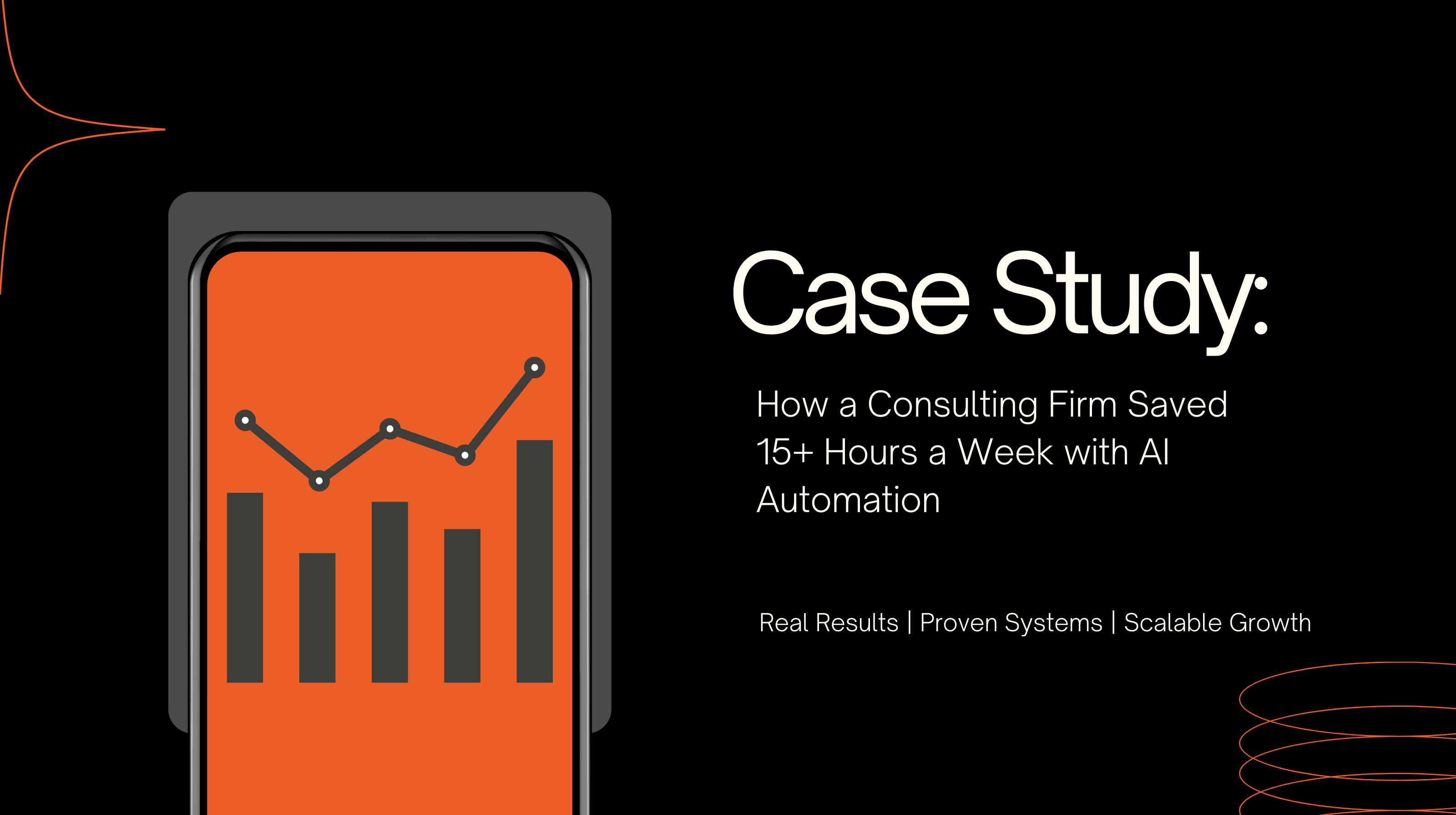Predictive analytics helps businesses anticipate trends, improve decision-making, and optimize resources by analyzing historical data. AI has elevated this practice, enabling companies to process large datasets, predict outcomes, and automate tasks. Choosing between custom AI models and off-the-shelf solutions depends on your business needs, budget, and goals.
Quick Comparison
Key Insight: Custom AI suits businesses with complex needs or strict data requirements, while off-the-shelf solutions work for standard tasks or tight budgets. A hybrid approach often combines the strengths of both.
Predictive Analytics with AI
1. Custom AI Models
Custom AI models take predictive analytics to the next level by offering solutions specifically designed to tackle unique operational challenges and meet distinct data needs. Unlike generic tools, these models are crafted to address the precise requirements of a business, enabling them to solve issues that standard solutions often miss. This tailored approach not only resolves specific problems but also drives better performance outcomes.
Flexibility
A standout feature of custom AI models is their ability to adapt seamlessly to a company’s unique needs. While off-the-shelf solutions often require businesses to adjust their workflows, custom models integrate directly into existing systems, aligning with specific goals. For example, a manufacturing company might need a predictive maintenance model that accounts for its unique equipment configurations, environmental conditions, and production schedules. These models enhance current systems without requiring a complete overhaul, making them a practical choice for businesses looking to optimize their operations.
Cost
Custom AI models come with a higher upfront cost compared to pre-built solutions, but the long-term benefits often justify the investment. On average, AI investments deliver a return of 3.5 times the initial cost, with some companies reporting returns as high as 8 times their investment. Basic AI solutions typically range from $20,000 to $80,000, while more advanced models fall between $50,000 and $150,000. Highly specialized systems can cost anywhere from $100,000 to $500,000, depending on their complexity. These costs are generally divided into model development (30–40%), data collection (15–25%), infrastructure (15–20%), and testing (10–15%). Industry-specific implementations, such as manufacturing, can cost upwards of $400,000 to $800,000, while retail applications often range from $200,000 to over $500,000. Even a small AI development team can drive annual costs beyond $400,000.
Scalability
Custom AI models are built with scalability in mind, making them a great fit for growing businesses. Their modular design allows for easy expansion as data volumes and user demands increase. For instance, as a company expands its operations across departments or regions, a custom AI system can grow alongside it. Walmart’s AI-driven system is a prime example, achieving a 1.5% cost reduction in supplier agreements and cutting unit costs by 20%. This demonstrates how a scalable custom solution can handle enterprise-level demands while delivering tangible results.
Data Privacy
Data privacy is a top priority when choosing predictive analytics tools, especially as the global cost of a data breach is projected to reach $4.88 million in 2024. Custom AI models offer businesses complete control over their sensitive information, as they are trained on first-party data and can be configured to meet strict compliance standards like GDPR and HIPAA. These systems often operate in isolated environments with limited access, ensuring robust data protection. Techniques such as federated learning further reduce the risk of breaches.
A 2023 Pew Research Center survey revealed that 81% of Americans feel the risks of AI outweigh its benefits, with data privacy being a major concern. Companies like Devcore address this by building custom AI systems that not only enhance operations but also prioritize data security. By adhering to rigorous privacy standards, these tailored solutions protect sensitive business information while maintaining operational efficiency, reinforcing trust and value in the process.
2. Off-the-Shelf Predictive Analytics Solutions
Off-the-shelf predictive analytics tools come ready to use, offering quick deployment and reliable performance. Unlike custom-built models tailored to specific needs, these solutions prioritize speed and ease of implementation, often at the expense of flexibility and adaptability.
Flexibility
These solutions are designed for general use cases, making them a good fit for standard tasks like inventory tracking or order management. However, their one-size-fits-all approach can be a drawback for businesses with unique workflows or legacy systems. For example, integrating these tools into existing processes might require adjustments or even costly workarounds.
As companies grow or face industry-specific challenges, the lack of customization can become a significant hurdle. These platforms may not evolve alongside the business, limiting their long-term usability.
Cost
One of the biggest advantages of off-the-shelf solutions is their affordability, especially for businesses with tight budgets. Basic AI tools can range from $20 to $400 for a minimum viable product, while more robust packages cost between $99 and $1,500 per month. Chatbots and personal assistant applications typically fall within this price range as well.
However, costs can rise quickly with increased data usage. For instance, some third-party tools may cost up to $40,000 annually, and advanced feedback analytics platforms supporting 50 users could total around $900,000 over five years. On the other hand, subscription-based pricing models offer predictable costs, making budget planning easier. Companies using managed cloud services, for example, have reported reducing five-year operating expenses by 48%. Moreover, IDC research highlights that 92% of businesses using managed AI solutions see a return on investment within 14 months.
Scalability
Scaling can be a challenge with off-the-shelf solutions. As data volumes increase or tasks become more complex, businesses often encounter limitations like performance bottlenecks or usage caps. Addressing these issues may require upgrading to higher-tier plans or even switching platforms entirely, both of which can be costly and disruptive.
Another issue is the rigid architecture of many pre-built solutions. Instead of scaling specific features, businesses might need to upgrade the entire platform, even if only a portion of it requires improvement. Additionally, relying on vendor-driven updates and roadmaps can hinder scalability, especially if the vendor's priorities don't align with a company’s growth needs.
Data Privacy
Data privacy is a critical concern when using off-the-shelf tools. With 2.5 quintillion bytes of data generated daily - 70% of which is user-generated - businesses must often share sensitive information with third-party vendors, increasing risks of breaches and regulatory challenges.
Industries like manufacturing are particularly vulnerable, with over 25% of cyberattacks in 2023 targeting this sector. Many off-the-shelf platforms rely on standard security measures, which may not meet the stringent requirements for handling sensitive or proprietary data. Businesses often need to implement additional security layers or manual processes to comply with regulations.
"Compliance-based approaches to privacy protection tend to focus on addressing privacy breaches after the fact. Instead, we recommend that organizations build privacy protections into their technology, business strategies and operational processes to prevent breaches before they happen." - Deloitte
Another issue is the lack of transparency in how these tools handle data. Many operate as "black boxes", making it difficult for companies to track how their data is processed, stored, or shared. This opacity complicates compliance efforts and introduces additional risks for businesses managing sensitive information.
Advantages and Disadvantages
When deciding between custom AI models and off-the-shelf solutions, it’s important to weigh the pros and cons of each. These options come with distinct benefits and challenges that can significantly influence your predictive analytics outcomes. Let’s break it down to help you identify which approach aligns best with your business goals.
Custom AI models are designed to deliver highly specific and adaptable solutions that evolve alongside your business needs. They allow you to tailor algorithms and data inputs to match unique workflows and challenges. This flexibility not only strengthens your predictive models but can also transform them into proprietary assets that provide a competitive edge. Additionally, custom models offer robust data privacy measures, as you retain full control over your data, ensuring compliance with stringent regulations.
Off-the-shelf solutions, on the other hand, are known for their affordability and ease of deployment. With initial costs ranging from $200 to $40,000, these pre-built tools are ideal for businesses with tighter budgets or those looking for quick results. They’re reliable for standard predictive analytics tasks and can deliver immediate benefits. However, they come with limitations - customization is restricted, and data privacy can become a concern when sensitive information is managed by third-party vendors. In fact, 53% of organizations cite data privacy as a top concern when adopting AI solutions.
Here’s a side-by-side comparison to help clarify the differences:
These differences highlight why businesses need to carefully evaluate their priorities. Research shows that 70% of companies investing in AI end up dissatisfied because they chose the wrong type of solution. Moreover, only 25% of organizations see meaningful value from their AI investments, with 60% failing to define or track KPIs that measure success.
"If data control, privacy, and seamless integration into a complex IT ecosystem are top priorities, custom AI has clear advantages. If using an off-the-shelf service, executives should perform due diligence on the vendor's data policies and ensure they align with the company's compliance requirements." - BotsCrew
For companies that emphasize data sovereignty and regulatory compliance, custom AI offers tailored security features like specific encryption protocols and on-premise data processing. These measures help meet regulations such as GDPR, HIPAA, and the California Consumer Privacy Act.
Interestingly, many businesses are now adopting a hybrid approach, combining off-the-shelf tools for immediate needs with custom AI components for specialized challenges. This strategy typically requires an investment between $10,000 and $300,000 and offers the best of both worlds: rapid deployment alongside scalable, precise solutions.
Ultimately, the right choice depends on your business's unique requirements, technical expertise, budget, and growth ambitions. Custom solutions tend to work well for companies with complex workflows or niche challenges, while off-the-shelf options are better suited for addressing general, short-term needs.
Conclusion
Deciding between custom AI models and off-the-shelf solutions comes down to understanding your business's specific needs. This decision can significantly impact whether your AI initiatives succeed or fall short. The key is to align your choice with the unique challenges and objectives your organization faces.
Custom AI models are particularly effective when addressing specialized problems. For instance, a financial institution saw a 37% improvement in fraud detection accuracy with a custom-built system, while a global manufacturing company cut unplanned downtime by 73% using a tailored predictive maintenance solution. These examples highlight how custom solutions can deliver outstanding results when designed to meet specific business demands.
Custom AI also proves invaluable in cases requiring strict compliance, seamless integration with legacy systems, or leveraging proprietary knowledge. According to McKinsey, businesses that adopt custom AI solutions tailored to their processes achieve 3.5 times greater productivity gains compared to those using generic tools.
That said, off-the-shelf solutions remain a practical choice for businesses with straightforward needs. They are particularly effective for standard predictive analytics tasks, providing quick results without the need for extensive customization.
A mix of both approaches can often be the best strategy. Using off-the-shelf tools for immediate wins while developing custom models for complex, specialized challenges offers a balanced path forward.
To make the right decision, enterprise leaders need to carefully assess their objectives. Defining clear goals and success metrics is crucial in determining whether a pre-built solution or a custom model is the better fit. Additionally, investing in thorough data preparation is critical - organizations that prioritize this step achieve 40–60% better performance outcomes compared to those that rush the process.
As the global machine learning market continues to grow - projected to expand at a 36.2% CAGR and exceed $225 billion by 2030 - staying ahead requires informed, strategic planning. Success lies in aligning your AI strategy with your organization’s unique context, resources, and long-term vision.
For businesses seeking custom AI solutions tailored to their needs, partnering with experienced professionals - like Devcore - can be a pivotal step toward building systems that deliver measurable results and adapt to your goals.
FAQs
What should businesses consider when choosing between custom AI models and off-the-shelf solutions for predictive analytics?
When choosing between custom AI models and off-the-shelf solutions for predictive analytics, it’s crucial to align your decision with your business’s specific needs and objectives.
Custom AI models shine when you need a solution tailored to your unique requirements. They integrate smoothly with existing systems, tackle specialized challenges, and provide flexibility for future growth. These models are particularly useful if your business handles complex datasets or operates under strict security and scalability demands.
In contrast, off-the-shelf solutions are typically quicker to deploy and come with a lower upfront cost. That said, they might not offer the adaptability required for niche applications or changing business priorities. To make the right choice, weigh factors like integration, data complexity, and the long-term value these solutions can bring to your organization.
How do custom AI models protect sensitive data and comply with regulations like GDPR and HIPAA?
Custom AI models are built with privacy-by-design principles, which means data protection is baked into their foundation. They use techniques like data masking and pseudonymization to protect sensitive information while still allowing the data to be useful for analysis.
These models also align with regulations like GDPR and HIPAA by establishing clear legal grounds for data processing, maintaining transparency, and implementing strict access controls. This approach helps your enterprise stay compliant with regulatory requirements while ensuring data remains secure and private.
How can businesses benefit from combining custom AI models with off-the-shelf solutions for predictive analytics?
A hybrid approach that merges custom AI models with off-the-shelf solutions gives businesses a smart way to leverage both precision and efficiency. Custom AI models are designed to address specific business challenges, offering tailored insights and accuracy, while off-the-shelf tools are great for quick implementation and cost-effective solutions across broader applications.
By combining these two, businesses can make better use of their resources, streamline operations, and enhance decision-making processes. This mix of flexibility from custom models and the ease of pre-built tools helps organizations tackle unique challenges while scaling efficiently. It's a balanced way to drive meaningful results in predictive analytics.
Related posts
- Manual Workflows Slowing Growth? AI Solutions
- Best AI Integration Platforms for Mid-Size Firms
- Custom Automation for Operational Efficiency: Success Stories
- Ultimate Guide to Load Balancer Performance Monitoring
{"@context":"https://schema.org","@type":"FAQPage","mainEntity":[{"@type":"Question","name":"What should businesses consider when choosing between custom AI models and off-the-shelf solutions for predictive analytics?","acceptedAnswer":{"@type":"Answer","text":"<p>When choosing between <strong>custom AI models</strong> and <strong>off-the-shelf solutions</strong> for predictive analytics, it’s crucial to align your decision with your business’s specific needs and objectives.</p> <p><strong>Custom AI models</strong> shine when you need a solution tailored to your unique requirements. They integrate smoothly with existing systems, tackle specialized challenges, and provide flexibility for future growth. These models are particularly useful if your business handles complex datasets or operates under strict security and scalability demands.</p> <p>In contrast, <strong>off-the-shelf solutions</strong> are typically quicker to deploy and come with a lower upfront cost. That said, they might not offer the adaptability required for niche applications or changing business priorities. To make the right choice, weigh factors like integration, data complexity, and the long-term value these solutions can bring to your organization.</p>"}},{"@type":"Question","name":"How do custom AI models protect sensitive data and comply with regulations like GDPR and HIPAA?","acceptedAnswer":{"@type":"Answer","text":"<p>Custom AI models are built with <strong>privacy-by-design principles</strong>, which means data protection is baked into their foundation. They use techniques like <em>data masking</em> and <em>pseudonymization</em> to protect sensitive information while still allowing the data to be useful for analysis.</p> <p>These models also align with regulations like <strong>GDPR</strong> and <strong>HIPAA</strong> by establishing clear legal grounds for data processing, maintaining transparency, and implementing strict access controls. This approach helps your enterprise stay compliant with regulatory requirements while ensuring data remains secure and private.</p>"}},{"@type":"Question","name":"How can businesses benefit from combining custom AI models with off-the-shelf solutions for predictive analytics?","acceptedAnswer":{"@type":"Answer","text":"<p>A <strong>hybrid approach</strong> that merges <strong>custom AI models</strong> with <strong>off-the-shelf solutions</strong> gives businesses a smart way to leverage both precision and efficiency. Custom AI models are designed to address specific business challenges, offering tailored insights and accuracy, while off-the-shelf tools are great for quick implementation and cost-effective solutions across broader applications.</p> <p>By combining these two, businesses can make better use of their resources, streamline operations, and enhance decision-making processes. This mix of flexibility from custom models and the ease of pre-built tools helps organizations tackle unique challenges while scaling efficiently. It's a balanced way to drive meaningful results in predictive analytics.</p>"}}]}




